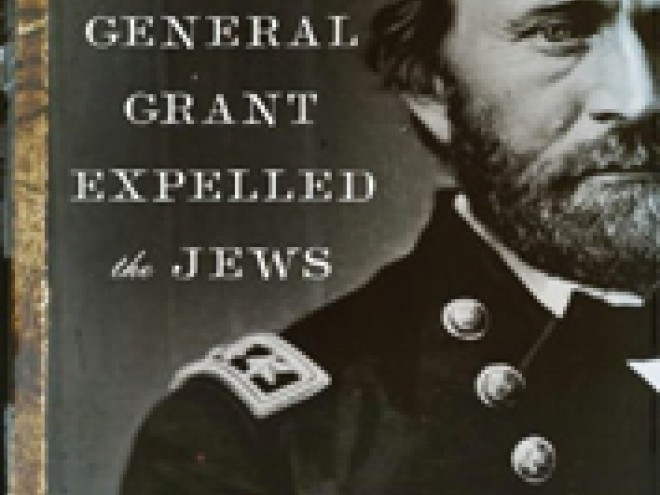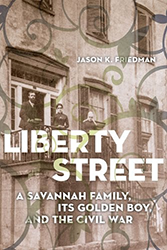I predict that Jews and the Civil War: A Reader will very quickly become one of the definitive scholarly texts on the Jewish role in the Civil War. Any one of the seventeen articles could stand alone as a fascinating sociocultural history of the period. The articles are organized around seven themes; “Jews and Slavery,” “Jews and Abolition,” “Rabbis and the March to War,” “Jewish Soldiers during the Civil War,” “The Home Front,” “Jews as a Class,” and “Aftermath.” The important role Jewish women played in the Civil War period is the focus of several of the articles.
On one level, the book is a source of fascinating and little known facts about the role of Jews in the period. For example, Eli N. Evans, in his “Overview: The War between Jewish Brothers in America,” describes how President Lincoln selects one of his “closest confidants” as his emissary to “explore peace talks after Gettysburg and the fall of Vicksburg.” That emissary was Isachar Zaharie, his Jewish “chiropodist.” This may sound strange, but Zaharie, a Jewish English immigrant, was used to crossing social and regional lines because he treated the feet of both Union officials and Confederate higherups and had already been involved in sending important information about the South back to Lincoln. In turn, Confederacy President, Jefferson Davis, sent his “right-hand man” to represent the South. The Confederate emissary was Judah P. Benjamin. Benjamin was also Jewish and after Secession, served as the Attorney General of the Confederacy and moved on to become the Confederacy’s Secretary of War. He later went on to be a United State Senator representing the state of Louisiana.
According to Evans, there were approximately twelve hundred Jews who served in the Confederacy including twenty-four army officers and eleven navy officers. In the North, 6,000 Jews served in the Union Army, among them were sixteen officers including two Union Army Jewish brigadier generals — Edward Solomon and Frederick Knefler. There were also Jewish spies for both sides and families were often split by different regional allegiances. Evans described the conflicting allegiances in the Ochs family of Chattanooga, Tenjewnessee. The father, Julius Ochs, joined the Union Army. His wife, Bertha, on the other hand, was a staunch supporter of the Confederacy and was “once arrested for trying to smuggle quinine in a baby carriage to wounded Confederate soldiers.” Before her death, Bertha requested a Confederate flag be put in her coffin. Julius was buried next to her in a coffin draped with the Stars and Stripes. The Ochs couple’s son was Adolph, who ultimately bought and built the newspaper The New York Times.
Jews and the Civil War is much more than a compilation of little known facts. It is a scholarly analysis of American and Jewish history. Each article is assiduously researched and followed by detailed endnotes identifying the source of the information. This puts the book on the same level as that landmark study of Jews in the Civil War by Bertram Korn in 1951. Prior to Korn’s work, Mendelsohn reports, many accounts of Jewish history in the United States were often written by “amateur historians” who presented overly laudatory accounts of Jewish achievements intended to counteract anti-Semitic depictions of Jews as cowards, and unpatriotic. Korn’s work changed that approach. Korn’s articles, “Jews and Negro Slavery in the Old South, 1789−1865” and “Jewish Chaplains during the Civil War” are included in this reader. They are objective and intriguing historical records of Jews as planters, owners, and traders and emancipators of their slaves and war chaplains.
Many of the articles capture the eternal precariousness of the Jewish experience. Seymour Drescher’s article, “Jews and New Christians in the Atlantic Slave Trade,” debunks the notion that Jews were major players in the slave trade. In his discussion of the socio-historical context for Jewish involvement in the slave trade, Drescher details the impact of the Inquisition on Jewish life. Spanish Jews, including those who converted to Christianity, were never safe. For example, in 1492, when the New Christians fled to Portugal to escape the Inquisition, the Spanish king ordered the abduction of two thousand of their children. The children were baptized and deported to the African island São Tomé, where most of them perished. Africa, as described by Drescher was soon to be coined “the white man’s grave” when actually it was first “a white child’s grave” or more accurately a Jewish child’s graveyard. Some of the Sephardic Jews sought refuge in North and South America.
But Jewish life in America could also be precarious. Several articles analyze what John Simon called “That Obnoxious Order” which referred to “Order No. 11” issued by General Ulysses S. Grant in 1862 expelling all Jews from the Tennessee Department, which included parts of Tennessee, Mississippi, Kentucky, and Illinois. They had twenty-four hours to leave, according to Evans. Grant charged them with being profiteers from manipulations of cotton sales and thereby victimizing Northerners. His view was shared by General William Sherman who “complained of ‘swarms of Jews and speculators’” despite the fact that many in their community had lived in Tennessee for decades and included former Union soldiers. The order was rescinded by President Lincoln after a contingent of prominent Jews went to Lincoln and informed him of the unfairness of the order.
I recommend this book to all readers who enjoy Jewish history. Many of the articles can easily serve as springboards for teachers of American and Jewish history who want to provide articles depicting the Civil War through memoirs, letters, diaries, rabbinical talks, and popular magazines as well as traditional historical sources. Endnotes, illustrations, index, recommended readings list.

Nonfiction
Jews and the Civil War: A Reader
- Review
By
– August 31, 2011
Carol Poll, Ph.D., is the retired Chair of the Social Sciences Department and Professor of Sociology at the Fashion Institute of Technology of the State University of New York. Her areas of interest include the sociology of race and ethnic relations, the sociology of marriage, family and gender roles and the sociology of Jews.
Discussion Questions

Jewish literature inspires, enriches, and educates the community.
Help support the Jewish Book Council.



